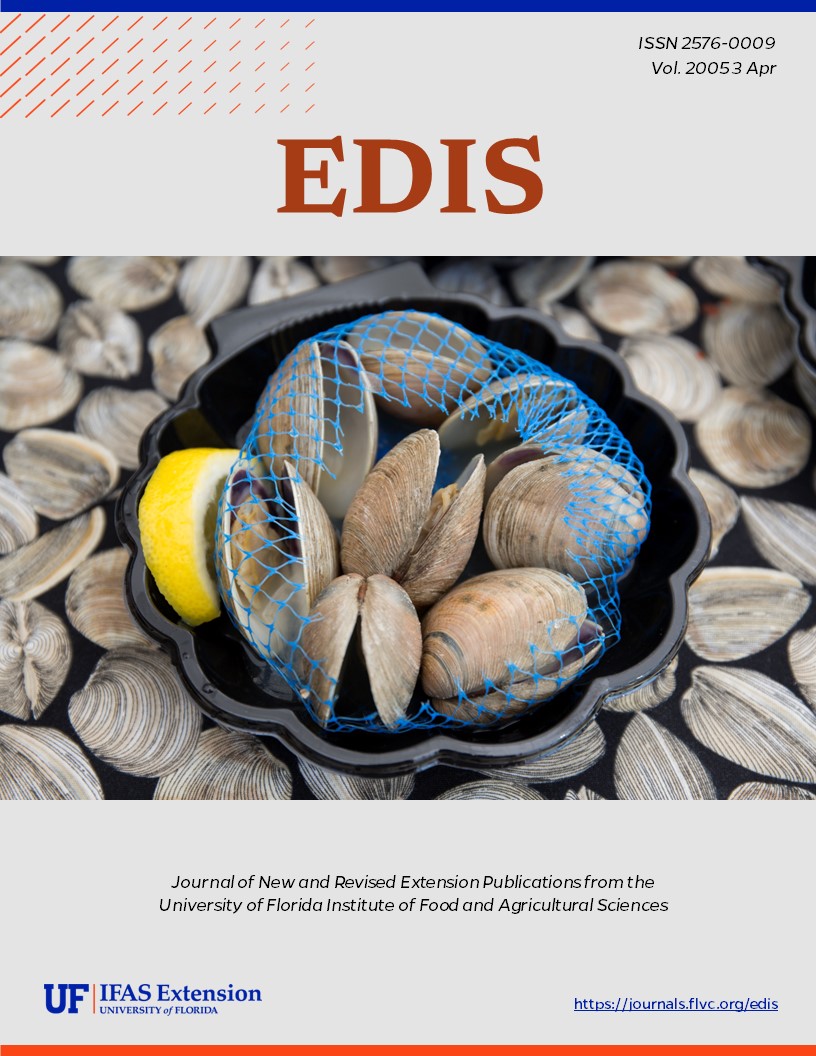Abstract
The most common stick insect in Florida is Anisomorpha buprestoides (Stoll), the so-called twostriped walkingstick. Other names applied to it and to stick insects in general include devil's riding horse, prairie alligator, stick bug, witch's horse, devil's darning needle, scorpion, and musk mare (Caudell 1903). The last common name is particularly apt as this species is capable of squirting a strong-smelling defensive spray that is painfully irritating to the eyes and mucous membranes (Gray 1835, Meinwald et al. 1962, Eisner 1965, Stewart 1937, Hatch et al. 1993, Paysse et al. 2001, Dziezyc 1992). Several recent inquiries about such incidents prompted the preparation of this circular. This document is EENY-314 (originally published as DPI Entomology Circular No. 408), one of a series of Featured Creatures from the Entomology and Nematology Department, Florida Cooperative Extension Service, Institute of Food and Agricultural Sciences, University of Florida. Published: November 2003.
References
Albert RO. 1947. Another case of injury to the human eye by the walking stick, Anisomorpha(Phasmidae). Entomological News 58 : 57-59.
Blatchley WS. 1920. Orthoptera of northeastern America. Nature Publishing Co., Indianapolis. 784 p.
Bradley JC, Galil BS. 1977. The taxonomic arrangement of the Phasmatodea with keys to the subfamilies and tribes. Proceedings of the Entomological Society of Washington 79: 176-208.
Carlberg U. 1985. Chemical defence in Anisomorpha buprestoides (Houttuyn in Stoll') (Insecta: Phasmida). Zool. Anz. Jena 215: 177-188.
Caudell AN. 1903. The Phasmidae, or walkingsticks, of the United States. Proceedings of the U. S. National Museum 26: 863-885. https://doi.org/10.5479/si.00963801.26-1335.863
Davis WT. 1914. Notes on Orthoptera from the East Coast of Florida with descriptions of two new species of Belocephalus. Journal of the New York Entomological Society 22: 191-205.
Dziedzyc J. 1992. Insect defensive spray-induced keratitis in a dog. Journal of the American Veterinary Medicine Association 200: 1969.
Eisner T. 1965. Defensive spray of a phasmid insect. Science 148: 966-968. https://doi.org/10.1126/science.148.3672.966
Gray GR. 1835. Synopsis of the species of insects belonging to the family of Phasmidae. London. 48 p. https://doi.org/10.5962/bhl.title.8697
Gunning GE. 1987. Behavioral observations of the walking stick, Anisomorpha buprestoides(Phasmatodea: Phasmatidae). Florida Entomologist 70: 406-408. https://doi.org/10.2307/3495078
Happ GM, Strandberg JD, Happ CM. 1966. The terpene-producing glands of a phasmid insect. Cell morphology and chemistry. Journal of Morphology 219: 143-160. https://doi.org/10.1002/jmor.1051190204
Hatch RL, Lamsens SD, Perchalski JE. 1993. Chemical conjunctivitis caused by spray of A. buprestoides. Two-striped walkingstick. Journal of the Florida Medical Association 80: 758-759.
Hetrick LA. 1949a. Field notes on a color variant of the two-striped walkingstick, Anisomorpha buprestoides, (Stoll). Florida Entomologist 32: 74- 77. https://doi.org/10.2307/3493061
Hetrick LA. 1949b. The oviposition of the two-striped walkingstick, Anisomorpha buprestoides(Stoll). Proceedings of the Entomological Society of Washington 51: 103-104.
Littig KS. 1942. External anatomy of the Florida walking stick Anisomorpha buprestoides Stoll. Florida Entomologist 25: 33-41. https://doi.org/10.2307/3492435
MacAtee WL. 1918. Vaporous discharge by Anisomorpha buprestoides (Orthoptera: Phasmidae). Entomological News 29: 388.
Meinwald J, Chadha MS, Hurst JJ, Eisner T. 1962. Defense methods of arthropods - IX. Anisomorphal, the secretion of a phasmid insect. Tetrahedron Letters 1: 29-33. https://doi.org/10.1016/S0040-4039(00)62038-5
Paysse EA, Holder S, Coats DK. 2001. Ocular injury from the venom of the southern walkingstick. Opthalmology 108: 190-191. https://doi.org/10.1016/S0161-6420(00)00432-2
Rehn JA, Hebard M. 1916. Studies in the Dermaptera and Orthoptera of the Coastal Plain and Piedmont Region of the southeastern United States. Proceedings of the Academy of Natural Sciences of Philadelphia 1916: 87-214.
Stewart MA. 1937. Phasmid injury to the human eye. Canadian Entomologist 69: 84-86. https://doi.org/10.4039/Ent6984-4
Unless otherwise specified, articles published in the EDIS journal after January 1, 2024 are licensed under a Creative Commons Attribution-NonCommercial-NoDerivs 4.0 International (CC BY-NC-ND 4.0) license.

